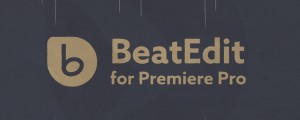Section 2
Animating Hierarchy
When you tell a story, you need to control where the viewer is looking. In the layout chapter, you learned that a static layout needs a clear hierarchy to communicate its content effectively. If a poster has a clear hierarchy, for example, then you’ll focus on the most important part first, before discovering step by step the less important pieces of information. In other words, the poster tells a story – and it’s the responsibility of the designer to come up with the proper hierarchy, so that the ingredients of the story appear in the right order (most important to least important).
When you create an animation, you have the same responsibility. You have to control the viewers focus. Even if you have a lot of content in your scene at one time, you can control what your viewers are looking at, and when. By doing this, you ensure they see everything that’s relevant, and see it in the order that you need to tell your story. So, when creating your animation, think of it as a series of focus shifts from one element of your story to the next.
Here’s an example: the beginning of the promo video for our extension BeatEdit for Premiere Pro.
When you watch the clip, I want you to concentrate on the main title text – BeatEdit for Premiere Pro. How did we ensure that it first has a lot of focus and then loses this focus, despite remaining in the scene?
We achieved this focus change with a very simple animation: we scaled down both the text itself and the waveform element behind it (as well as moving the text down a bit). But the changes in this short animation contain almost all of what we learned in the Hierarchy section:
So, when creating an animation, you can use the same methods that you used to establish your hierarchy to give elements more or less focus.

BeatEdit detects the beats in your music and generates markers for them in your Premiere Pro timeline. Create automatic edits in sync with the music, or let BeatEdit assist your manual editing process.

Auto-detect beats in a music track, wiggle to the beat, write markers,repeat keyframes, stagger layers, and more!

Automatic layouts, snappable guide grids and modifiable shape layer guides - because motion design isn't static.